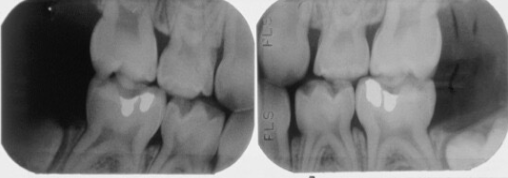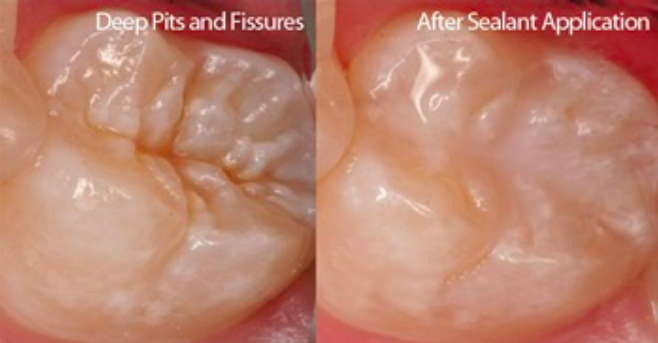Hi again! Last time we talked a lot about primary (baby) teeth, and what to expect from the time teeth start to erupt in your baby’s mouth until the time they start school and their 1st permanent molars start to come in. If you have a child in this age group, please refer back to our Caring for your Baby’s “Baby Teeth“ article for some recommendations and what to expect during this time!
In today’s post, we are going to focus on what to do when there are some baby teeth, and some permanent teeth in your child’s mouth at the same time; a stage that we call “mixed dentition”. Mixed dentition normally occurs from ages 6-12.
Cavities and Gingivitis are both prevalent in this Aged Group:
- Cavities (dental caries) are the result of acid production in the mouth. Acid is formed when the sugars existing in food and drinks react with the bacteria present in dental plaque. The acid then starts to demineralize the outermost layer of a tooth (the enamel), and the cavity process has begun!
- Bottom Line eating lots of sugar and not brushing/flossing teeth properly will lead to cavities.
- Gingivitis is the inflammation of gums, most commonly due to the presence of dental plaque in the mouth.
- Bottom Line our bodies don’t like plaque around our teeth, so when plaque is present, our gums become red, swollen and often bleed.
The good news is that with you helping to implement good oral hygiene practices at home, in combination with regular dental visits with fluoride treatments and sealant applications, your child will be set up for a lifetime of good oral health.
AT HOME:
Home care is the most important piece to maintaining your child’s healthy smile.
Reducing Cavities and Getting Rid of Gingivitis:
- Regular brushing/flossing, and trying to limit sugar intake reduces the chance of cavities!
- Beverages containing sugar (pops, fruit juice, and sports drinks) should be avoided. If your child drinks these beverages, only serve them at mealtimes when saliva is flowing; saliva increases during mealtimes and helps to neutralize acid in the mouth.
- Have your child drink water between meals.
- If your child eats between meals, then choose nutritious foods like cheese, fruits and vegetables.
- If your child chews gum, give them xylitol or sugarless gum.
- Gingivitis is reversible with good oral hygiene!
- Regular brushing/flossing should resolve the gum inflammation in a couple of weeks and keep it from coming back.
Brushing and Flossing Recommendations:
School Aged (6-12 years)
- Brushing with a fluoride toothpaste twice daily and flossing once daily should be continued.
- Encourage your child to directly assume this responsibility.
- With younger children in this group however, a parent should still supervise.
AT THE DENTIST:
At each appointment, your child’s oral hygiene, eating/drinking habits, and his or her risk of tooth decay will be evaluated.
Professional Cleaning from a Dental Hygienist:
- The removal of bacterial plaque/calculus aids with prevention of gingivitis. Trained Dental Hygienists have specialized instruments to help remove plaque/calculus in tough to access areas of the mouth.
Application of a Professionally applied Fluoride:
- Fluoride gels/foams or varnishes reduce cavities by making teeth stronger, and therefore more resistant to acid attacks/cavity formation. Fluoride has also been shown to help repair the early stages of tooth decay, even before the decay becomes visible.
Dental Images:
- Used to help us see places in the mouth we cannot see with our eyes.
Bitewing Images captured on both the right and left sides of your child back teeth.
- These help us detect cavities between the teeth.

Panoramic Image shows all existing/developing teeth, upper and lower jaws, and surrounding structures/tissues.
- This helps us see erupting teeth and evaluate any dental abnormalities.
.png)
Dental Sealants:
Teeth are not flat, they have peaks and valleys. Pits and fissures (grooves) are present on the biting surface of back teeth and are very susceptible to cavities. This is because bacteria and food easily get stuck in these grooves and it is very difficult to clean them; the bristles of a toothbrush simply do not have good access to the area.
- Sealants do a great job at preventing these cavities.
- Sealants are a thin, plastic coating that is flowed onto the chewing surfaces of back teeth where the deep grooves and pits are. This coating fills the grooves and pits, thus preventing food and bacteria from getting stuck in the teeth!

OTHER THINGS TO THINK ABOUT DURING MIXED DENTITION:
1) Prevention of Traumatic Injuries to the Mouth:
Mouthguards for all participants in organized sports are recommended.
- We often think of mouthguards as something needed for heavy contact sports like hockey, football, rugby and lacrosse, but mouthguards are equally as important for other sports like soccer, baseball, basketball, cycling or rollerblading as well.
- A mouthguard can help prevent a vast array of injures such as chipped or broken teeth, root damage to teeth, lip and cheek injuries, fractured jaws, and concussions.
- If you want more information on mouthguards check out “The importance of mouth guards for children playing impact sports” article.
2) Orthodontic Treatment:
Both the Canadian and American Association of Orthodontists recommend children should see an orthodontist for an evaluation during the early stages of mixed dentition, as many orthodontic problems are easier to correct if detected early rather than waiting unit jaw growth has slowed.
- Therefore your dentist may refer you and your child to an orthodontist at this time.
Thanks for taking the time to read again!
Dr. Spencer Burns
Contact us today to schedule an appointment or stop by for a free baby teeth starter kit!
(506) 458-9669
123 York Street, Suite 102 and 201
Fredericton, NB E3B 3N6

